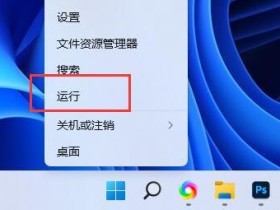C#反射使用方法过程及步骤
1. 定义要访问类的全名
2. 获取该类的类型
3. 实例化该类
4. 获取该类的字段、属性,方法
5. 设置该字段或属性内容,或调用其方法
从而达到使用字符串访问相应类的目的。
示例:
1. 根据窗口类的名称,产生一个新的窗口,相当于new 窗口类
//1. 定义窗口类名称:(窗口类的字符串名字,需要全路径名,否则获取不到TYPE)
string customClassName = @"IBAutoDeal.IBDealForms." + hasPanel.Text;
//2. 获取字符串customClassName(某个窗口类的字符串名字)指定类的Type
Type customClassType = Type.GetType(customClassName);
//3. 生成指定Type的实例,相当于new 类
object customClassObj = Activator.CreateInstance(customClassType);
// 4. 对新生成的类进行操作, 本例把new 出的窗口赋值给一个窗口变量
panelForm = customClassObj as Form;
// 由此达到使用类的字符串名生成一个该类的实例供后续程序的使用2. 根据类的字符串名字,给该类的字段或属性赋值
//反射功能使用及步骤:以下示例为给字符串类名生成一个实例,并给该类的属性或字段赋值
// 1. 定义类名称:(类的字符串名字,需要全路径名,否则获取不到TYPE)
string customVaribleName = @"IBAutoDeal.IBDealClass.CommVar";
// 2. 获取字符串 customVaribleName指定类的Type
Type customVaribleType = Type.GetType(customVaribleName);
// 3. 生成指定Type的实例,相当于new 类
object customAaribleObj = Activator.CreateInstance(customVaribleType);
// 4. 获取该类字段,本例是给一个公共的窗体变量赋值,而该变量在此是字段
// 如果是给该类的属性赋值,就需要使用 PropertyInfo pi = customVaribleType.GetField("v" + hasPanel.Text)
// 在该类中,某个域是属性还是字段呢?我个人的判断是,若该域提供了GET,SET方法,就为属性,否则为字段,也不知道正确否?
FieldInfo pi = customVaribleType.GetField("v" + hasPanel.Text);
// 5. 给该字段赋值,该字段是个窗口类变量,customClassObj就是示例1中根据字符串产生的窗口类
pi.SetValue(customAaribleObj, customClassObj);
// 通过以上5个步骤,完成了根据字符串的名字,给相应类的字段赋值3. 根据类的字符串名字,读取字段值,并使用该字段值(示例中,该字段值是窗体,该示例是销毁该窗体)
// 1. 定义类名称:(类的字符串名字,需要全路径名,否则获取不到TYPE)
string customVaribleName = @"IBAutoDeal.IBDealClass.CommVar";
// 2. 获取字符串 customVaribleName指定类的Type
Type customVaribleType = Type.GetType(customVaribleName);
// 3. 生成指定Type的实例,相当于new 类
object customAaribleObj = Activator.CreateInstance(customVaribleType);
// 4. 获取该类字段,本例是给一个公共的窗体变量赋值,而该变量在此是字段
// 如果是给该类的属性赋值,就需要使用 PropertyInfo pi = customVaribleType.GetField("v" + hasPanel.Text)
// 在该类中,某个域是属性还是字段呢?我个人的判断是,若该域提供了GET,SET方法,就为属性,否则为字段,也不知道正确否?
FieldInfo pi = customVaribleType.GetField("v" + e.Panel.Name);
// 5. 读取该字段的值(本示例该字段值为窗体,读取窗体变量,把销毁该窗体)
(pi.GetValue(customAaribleObj) as Form).Dispose();
// 6. 再为该字段赋空值
pi.SetValue(customAaribleObj, null);4. 示例3原来是通过switch来判断需要关闭那个窗口,这样就会有很多的case语句,通过反射,就用示例3的6行代码取代了,下面贴出原程序的代码,目的是让大家了解反射的作用:
// 被示例3取代的原代码段(根据e.Panel.Name的值对相应窗口关闭,并给公用变量赋值)
switch (e.Panel.Name)
{
case "FrmAccountStatistics":
CommVar.vFrmAccountStatistics.Dispose();
CommVar.vFrmAccountStatistics = null;
break;
case "frmPositionManager":
CommVar.vfrmPositionManager.Dispose();
CommVar.vfrmPositionManager = null;
break;
case "frmTrader":
CommVar.vfrmTrader.Dispose();
CommVar.vfrmTrader = null;
break;
case "frmLog":
CommVar.vfrmLog.Dispose();
CommVar.vfrmLog = null;
break;
case "frmDataTransPlant":
CommVar.vfrmDataTransPlate.Dispose();
CommVar.vfrmDataTransPlate = null;
break;
case "frmAccountTJ":
CommVar.vfrmAccountTJ.Dispose();
CommVar.vfrmAccountTJ = null;
break;
case "frmGridViewConfig":
CommVar.vfrmGridViewConfig.Dispose();
CommVar.vfrmGridViewConfig = null;
break;
case "frmTaticlistExcel":
CommVar.vfrmTaticlistExcel.Dispose();
CommVar.vfrmTaticlistExcel = null;
break;
case "frmQuoteLst":
CommVar.vfrmQuoteLst.Dispose();
CommVar.vfrmQuoteLst = null;
break;
case "frmProduct":
CommVar.vfrmProduct.Dispose();
CommVar.vfrmProduct = null;
break;
default:
break;
}5. 针对 T 的泛类型定义的类,给属性赋值示例代码如下:
public static T ReadClass<T>(string pClassName) where T:class
{
//1. 定义类名称:(因为有传入的T类,所以不需要类的名称了)
//2.获取类T的TYPE,注意,前面例子中是通过字符串取类型,使用的是Type.GetType()
Type classType = typeof(T);
//3. 生成指定 T 的实例,前面例子中,我们使用的是Activator.CreateInstance(classType)
T ClassObj = Activator.CreateInstance<T>();
//4. 定义类的属性变量,因程序要多次读取不同的属性,在此定义一个局部变量
PropertyInfo classPropertyInfo = null;
string tableName = "TradeParameters";
//DataTable必须转成DataView才能使用RowFilter
DataTable vDt = DataTableHelper.ReadTable(tableName);
DataView vDv = vDt.DefaultView;
vDv.RowFilter = $"ClassName = '{pClassName}'";
if (vDv.Count > 0)
{
string pName, pVaule;
foreach(DataRow dr in vDv)
{
pName = dr["AttributeName"].ToString();
pVaule = dr["AttributeValue"].ToString();
//5. 获取指定名称属性
classPropertyInfo = classType.GetProperty(pName);
if (classPropertyInfo != null)
{
//6. 给指定属性赋值
classPropertyInfo.SetValue(ClassObj, pVaule);
}
}
}
return ClassObj;
}





